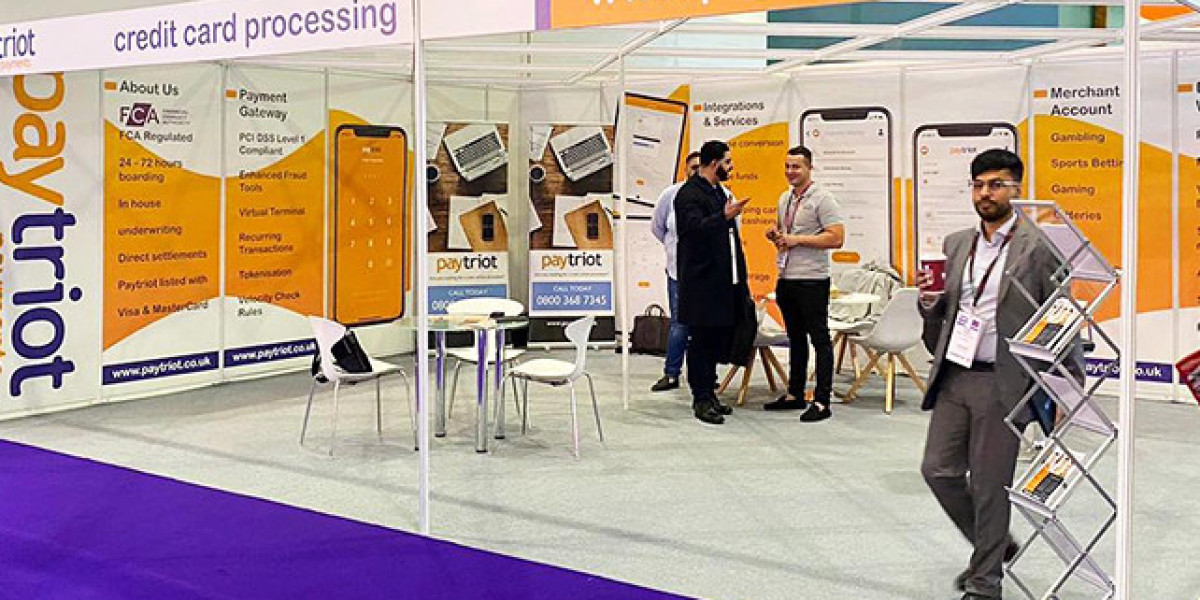Exhibitions and trade shows remain vital for businesses to connect with customers, partners, and investors. As the exhibition world evolves, methods to attract and engage visitors are changing too. Traditional printed materials like banners and shell scheme panels are still important, but there is a growing move towards incorporating digital technologies. Combining physical and digital displays allows exhibitors to create more interactive, striking, and memorable experiences. In this blog, we discuss the benefits of using both formats, share real-world examples, and offer practical tips. Whether it’s a simple shell scheme or a bespoke stand, this blend can truly elevate your presence.
Why Physical Displays Still Matter
Despite the growth of digital technology, physical exhibition graphics continue to play a crucial role on the exhibition floor. Their visual impact, tactile presence, and reliability make them a key part of most display strategies.
Printed materials like Foamex panels, roller banners, and large-format backdrops are highly effective for reinforcing your brand identity. Their clarity, colour accuracy, and ability to communicate information at a glance help visitors quickly grasp what your business offers. These graphics do not rely on electricity or software, making them dependable and simple to set up.
In addition, physical displays are versatile and reusable. Once printed, they can be used at multiple events, offering excellent long-term value. Whether using shell scheme graphics or free-standing boards, they create strong, immediate brand visibility.
The Power of Digital in Exhibitions
As exhibitions become more competitive, relying solely on static visuals is no longer enough. Digital displays bring movement, sound, and interactivity to your stand, helping to grab attention, deliver dynamic content, and increase brand engagement.
Options such as digital signage, interactive touchscreens, and video walls offer vast possibilities. A key strength of digital graphics is storytelling—video content can showcase services, share customer testimonials, or offer behind-the-scenes insights.
Personalisation is another major advantage. With the right software, digital content can be tailored to visitor interests—for instance, a touchscreen kiosk allowing users to explore services by industry.
Lastly, digital displays make it easy to gather data through surveys, signups, or demos, providing measurable engagement beyond what printed materials can achieve.
The Magic of Blending Both
Rather than viewing physical and digital displays as separate options, the most effective exhibition stands use a combination of both. By blending them thoughtfully, you create a more engaging environment that appeals to a wider audience and keeps visitors at your stand longer.
Hybrid exhibition graphics may include printed backdrops with built-in digital screens, interactive touchpoints placed alongside static signage, or even QR codes on physical materials that direct visitors to digital content. This cross-medium approach allows you to get the best of both worlds – the credibility and clarity of print with the flexibility and innovation of digital.
One example is placing a sleek digital display within a large printed panel wall. The screen might play an animated video while the surrounding print highlights key service points and branding. Another approach is to have your team hand out printed brochures that include QR codes linking to digital demos or special offers.
When planned carefully, this combination strengthens your messaging and improves your stand’s visual appeal. Whether you're working with a shell scheme or a custom exhibition stand design, visitors are more likely to interact, remember your brand, and take action after the event.
Practical Integration Tips
Blending physical and digital elements isn’t just about throwing in a screen or two. To make it truly effective, you need a clear strategy and careful planning. Below are some practical tips for achieving a smooth and successful integration:
1. Design Consistency
Make sure your physical and digital displays follow a consistent design theme. Use the same brand colours, typography, and tone of voice across all materials. This consistency builds trust and helps reinforce your brand message.
2. Plan for Technical Requirements
Digital elements require electricity, internet access (if applicable), and suitable mounts or enclosures. Plan early for how your exhibition stand will accommodate these needs. Hide wires neatly and consider backup power sources where necessary.
3. Tailor Content to the Medium
Digital displays offer the chance to show moving visuals, animations, or real-time content. Take advantage of this by creating content that works best on a screen – don’t just display a static image. For physical graphics, keep messaging simple and bold so it can be read from a distance.
4. Create Cross-Platform Flow
Encourage visitors to move between your physical and digital displays. For instance, use signage with QR codes or NFC tags that lead to interactive content. Alternatively, your digital screens can reference physical materials or encourage visitors to collect printed brochures.
5. Prepare Your Team
Your exhibition staff should understand how both elements work. Train them to guide visitors between digital demos and printed handouts, and ensure they know how to handle basic troubleshooting for any digital tools in use.
Common Mistakes to Avoid
Even with the best intentions, poor planning can weaken your exhibition presence. Here are a few mistakes to avoid when combining physical and digital displays:
- Using too much digital content without clear messaging. Overuse can overwhelm visitors.
- Failing to maintain consistency in design, tone, or message across formats.
- Poor lighting or screen placement reduces visibility and impact.
- Relying solely on digital without preparing a plan B for technical issues.
Make sure every component serves a purpose and supports your main goals, whether that’s generating leads, sharing information, or building awareness.
Conclusion
Combining physical and digital displays in your exhibition graphics creates a more impactful and immersive experience for visitors. While physical displays deliver dependable, high-quality visuals, digital tools add life through motion, sound, and interactivity. Blending both helps make your stand more memorable, drives greater engagement, and improves your return on investment. The key is consistency, careful planning, and focusing on the visitor experience. Whether you’re using a shell scheme or opting for a custom exhibition stand, hybrid displays give your brand a competitive edge. Sign Company London offers expert support in both traditional and digital graphics to help your exhibition truly stand out.







